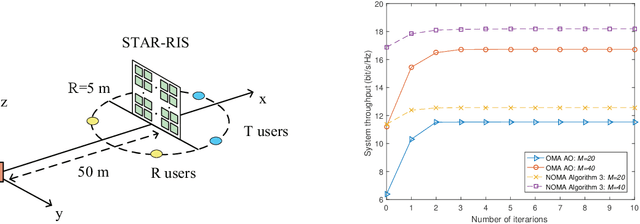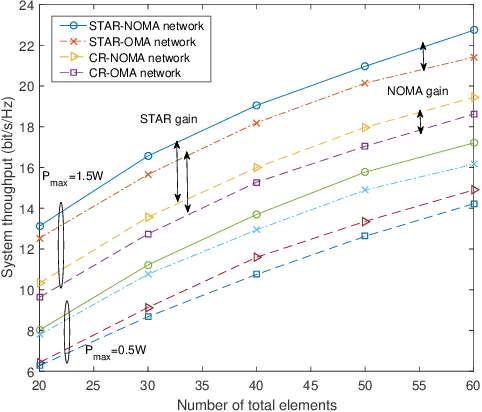Resource Allocation in STAR-RIS-Aided Networks: OMA and NOMA
Paper and Code
Nov 06, 2021



Simultaneously transmitting and reflecting reconfigurable intelligent surface (STAR-RIS) is a promising technology to achieve full-space coverage. This paper investigates the resource allocation problem in a STAR-RIS-assisted multi-carrier communication network. To maximize the system sum-rate, a joint optimization problem for orthogonal multiple access (OMA) is first formulated, which is a mixed-integer non-linear programming problem. To solve this challenging problem, we first propose a channel assignment scheme utilizing matching theory and then invoke the alternating optimization-based method to optimize the resource allocation policy and beamforming vectors iteratively. Furthermore, the sum-rate maximization problem for non-orthogonal multiple access (NOMA) is investigated. To efficiently solve it, we first propose a location-based matching algorithm to determine the sub-channel assignment, where a transmitted user and a reflected user are grouped on a sub-channel. Then, a three-step approach is proposed, where the decoding orders, beamforming-coefficient vectors, and power allocation are optimized by employing semidefinite programming, convex upper bound approximation, and geometry programming, respectively. Numerical results unveil that: 1) For OMA, a general design that includes same-side user-pairing for channel assignment is preferable, while for NOMA, the proposed transmission-and-reflection scheme can achieve near-optimal performance. 2) The STAR-RIS-aided NOMA network significantly outperforms the networks employing conventional RISs and OMA.
 Add to Chrome
Add to Chrome Add to Firefox
Add to Firefox Add to Edge
Add to Edge